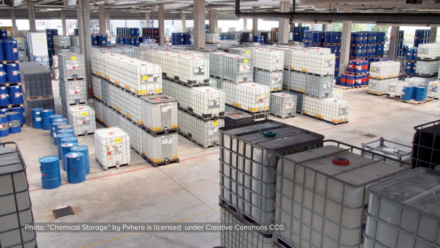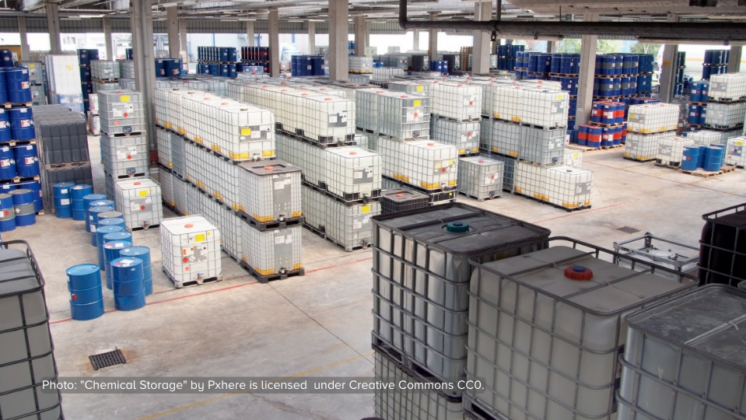The Green Manifesto, unveiled on 18 November at the Mobile Asia Congress, sets out how the mobile industry plans to lower its greenhouse gas emissions per connection, and demonstrates the key role that mobile communications can play in lowering emissions in other sectors and industries. It makes specific policy recommendations for governments and delegates attending the United Nations Climate Change Conference in Copenhagen (COP15), December 7-18, to realise the full potential of the role that mobile communications can take in reducing global greenhouse gas emissions.
The GSMA "Green Manifesto" sets out how the mobile industry plans to lower its greenhouse gas emissions per connection, and demonstrates the key role that mobile communications can play in lowering emissions in other sectors and industries. It also makes specific policy recommendations for governments and the United Nations Climate Change Conference in Copenhagen, including the 15th Conference of the Parties (COP15), in order to realise the full potential of mobile communications’ ability to enable reductions in global greenhouse emissions.
The mobile industry calls upon governments to sign a successor to the Kyoto Protocol and establish binding global long-term targets for the reduction of greenhouse gas emissions. Following from a new treaty, emissions reduction policies must be implemented or continued at a country, state and/or regional level. Greenhouse gas cap and trade schemes should deliver a stable and effective long-term price for carbon to stimulate innovation and the green economy.
The mobile industry’s goals
The mobile industry forecasts that it will reduce its total global greenhouse gas emissions per connection by 40% by 2020 compared to 2009. This forecast covers all emissions from energy sources under the control of the mobile operators, including energy consumption from the radio network, buildings, energy consumption and emissions from transport. In the next 12 to 24 months, the mobile industry will build on existing frameworks to develop and agree a standardized mechanism for measuring emissions, with a view to making a commitment to carbon neutral growth. The number of mobile connections is set to rise by 70% to 8 billion by 2020 as the industry builds out a new generation of mobile broadband networks bringing billions of people into the information economy. Despite this growth, the mobile industry forecasts that its total emissions will remain constant at 245 mega-tonnes of carbon dioxide equivalent (Mt CO2e) - equivalent to 0.5%2 of total global emissions in 2020, or the greenhouse gas emissions of the Netherlands.
Mobile operators plan to work with handset vendors to ensure that the energy consumed by a typical handset is reduced by 40% in standby and in use by 2020. Mobile operators will also work with equipment vendors to ensure that the life cycle emissions of network equipment components are reduced by 40% in the same timeframe.
Mobile’s enabling role
Mobile technologies are already being used to reduce greenhouse gas emissions and costs across a wide range of sectors of the economy, using SIM cards and radio modules embedded in machines and devices to deliver smart, intelligent solutions. By 2020 we estimate that mobile technologies could lower emissions in other sectors by the equivalent of taking one of every three cars off the road. Mobile communications can also make it straightforward for individuals to monitor their own carbon footprint, while being an effective channel for advice and suggestions to consumers on how to change their behaviour to cut their emissions. The mobile industry could enable greenhouse gas emissions reductions of 1,150 Mt CO2e - twice the emissions of the United Kingdom in 2020. These emission reductions would originate in sectors such as power (350 MtCO2e), buildings (350 Mt CO2e), transportation and logistics (270 Mt CO2e), and dematerialisation (160 Mt CO2e).
Policy priorities
In order to assist the mobile industry to enable emissions reductions in other sectors, it is vital that policymakers consider the following:
-
Including mobile solutions in government policies and programmes with respect to smart grids, buildings and transport.
-
Facilitating a common framework to measure the mobile industry’s energy and environmental performance, and that of other sectors, for example by aligning national and regional methodologies with those being developed by ETSI and ITU in conjunction with the mobile industry and other private sector players.
-
Supporting broadband infrastructure deployment that has become as important today as roads, railways and ports were in the 20th century, by ensuring the mobile industry has access to newly available harmonised spectrum and by supporting the roll out of energy efficient networks through the streamlining of planning approval and the provision of investment incentives.
-
Encouraging cross-sector collaboration between the mobile and other ICT sectors and the transport, buildings and power sectors, especially with respect to the development of open standards to ensure interoperability and drive scale efficiencies.
-
Demonstrating leadership by greening operations in the public service, e.g., by procuring embedded mobile-enabled smart building technologies in schools and government departments, and promoting increased teleworking amongst public sector employees.
-
Building awareness of mobile and other ICT technologies, through education of users, and helping to facilitate the behavioural changes that will create transformative reductions in greenhouse gas emissions.
-
Supporting the development and piloting of new technologies by incentivising the increased deployment of embedded mobile solutions with respect to smart grids, buildings and transport.
The social and economic impact of mobile communications
In the past two decades, the mobile industry has grown rapidly, today providing network coverage to more than 90% of the world’s population and connecting more than 4 billion people, the majority for the first time. The mobile industry is forecast to invest $800 billion during the next five years; $550 billion of this is earmarked for mobile broadband, potentially connecting 2.4 billion people to the Internet. If mobile broadband were to fuel a similar productivity revolution to that generated by mobile voice services, it could boost global GDP by 3-4%, while also making a significant contribution to combating climate change, by creating a low carbon infrastructure for the 21st century. The mobile industry understands governments will be discussing successor regimes to the Kyoto protocol and working to establish binding global long-term targets for the reduction of greenhouse gas emissions. Following from a new treaty, any emissions reduction policies implemented or continued at a country, state and/or regional level must deliver a stable and effective long-term price for carbon to stimulate innovation and the green economy.
The GSMA represents the interests of the worldwide mobile communications industry. Spanning 219 countries, the GSMA unites nearly 800 of the world’s mobile operators, as well as more than 200 companies in the broader mobile ecosystem, including handset makers, software companies, equipment providers, Internet companies, and media and entertainment organisations.










